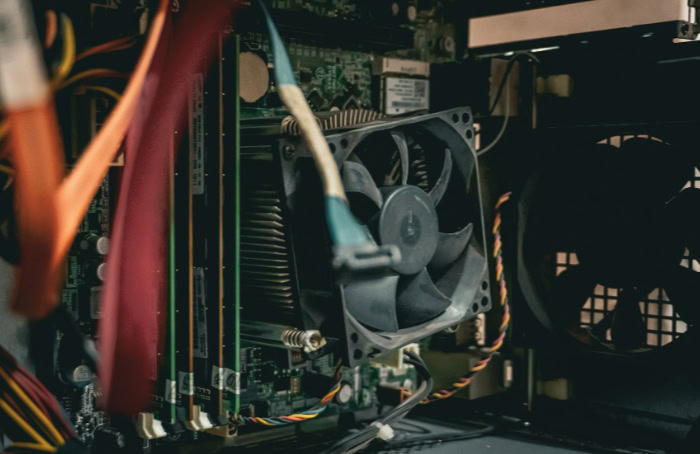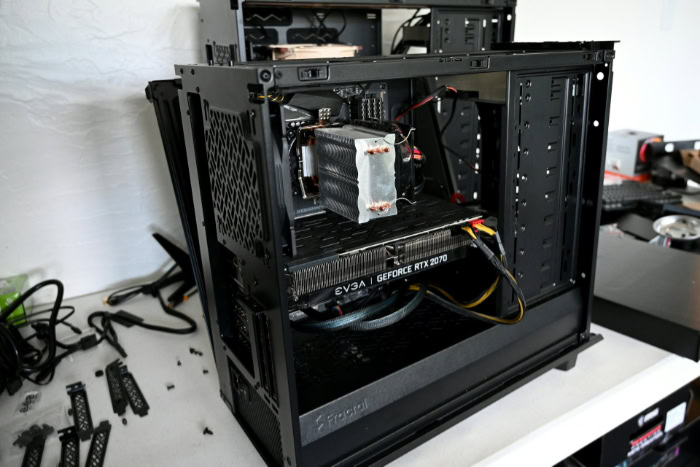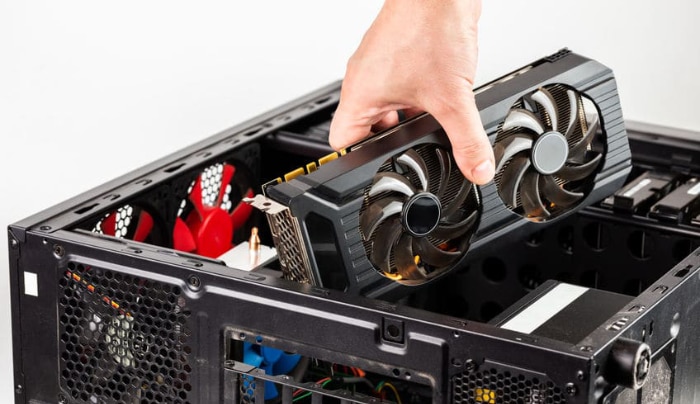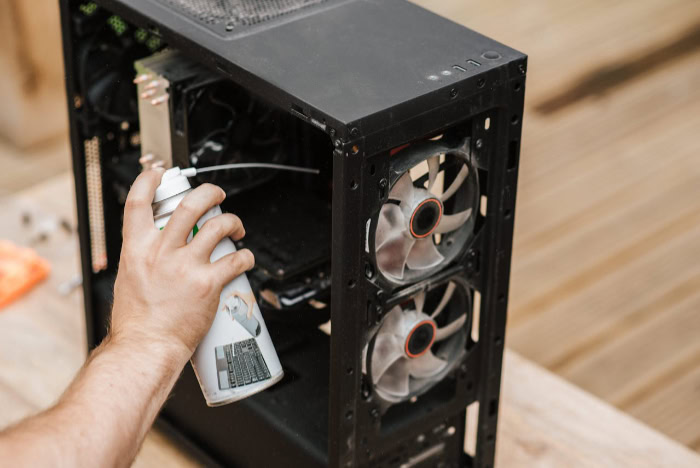How Often Should I Clean My PC? Signs You Shouldn’t Ignore

A sparkling clean PC is more than just a point of pride; it serves as an insurance policy against performance slowdowns, unexpected shutdowns, and expensive hardware failures. Dust and debris may seem harmless, but they stealthily invade your system, block airflow, and push your components to run hotter and harder than intended.
Regular cleaning is not about chasing perfection, but about striking the right balance between protecting your investment and keeping maintenance hassle-free.
Why PC Cleaning Matters
Keeping your PC clean is not just about appearances; it directly impacts how well your computer performs and how long it lasts. Dust build-up creates the perfect environment for overheating, electrical shorts, and a series of problems that can silently wear down your machine.
Regular cleaning acts as a simple line of defense, preventing small issues from spiraling into bigger, costlier repairs.
Hardware Degradation
Allowing dust to settle inside your computer can spell trouble for critical hardware components. Fans and heat sinks are responsible for moving warm air out and bringing cooler air in, but when dust builds up, it acts like a heavy blanket, trapping heat.
Blocked vents and clogged fans struggle to push air, causing temperatures to rise. Heat sinks lose efficiency when covered with grime, leading your CPU and GPU to run hotter than recommended.
Over time, excessive heat can damage components, warp plastics, and even fry delicate circuitry. Simple dust accumulation makes it much harder for your PC to stay cool, setting the stage for gradual hardware deterioration.
Performance Throttling
Overheating does more than just threaten hardware; it also forces your PC to slow down to protect itself. Modern CPUs and graphics cards are designed with safety features that reduce their speed when temperatures climb too high.
This process, called thermal throttling, keeps your system from reaching dangerous heat levels but comes at the cost of performance. You might notice games running slower, programs taking longer to load, or the occasional lag and stutter, even during normal use.
Ignoring regular cleaning means your machine will spend more time throttling performance, turning a once-speedy computer into a sluggish source of frustration.
Component Lifespan
Every PC part, from the power supply to the motherboard, benefits from good airflow and cool operation. Power supplies can overheat and fail if their internal fans are choked with dust.
Graphics cards, especially those used for gaming or creative work, depend on unobstructed cooling to operate at high speeds. Even the motherboard, which ties every component together, can suffer from excess heat, leading to shorter operational lives for capacitors and chips.
By allowing your PC to stay clean, you not only keep it running smoothly day-to-day but also decrease the chance of expensive part replacements down the line. Regular maintenance becomes a simple way to extend the useful life of your technology, making the most of your investment.
Key Factors Determining Cleaning Frequency

The ideal schedule for cleaning your PC is not one-size-fits-all. Different environments and usage habits can transform a low-maintenance setup into a dust magnet almost overnight.
Several important factors play a major role in deciding how often your computer needs attention.
Environmental Variables
The environment surrounding your PC can influence the speed at which dust and debris accumulate. Living with pets often means extra fur and dander floating around, making your computer a prime target for unwanted buildup.
Rooms that see frequent foot traffic or sit near open windows can contribute to a steady flow of dust into your case. Poor ventilation and stuffy air can trap heat and encourage more debris to settle inside your system.
On the other hand, a well-ventilated, regularly cleaned room provides a safer haven for your machine. Paying attention to these environmental details can make a major difference in how quickly your PC collects particles that could harm its components.
Usage Patterns
How you use your computer shapes its cleaning needs more than you might think. High-intensity tasks like gaming, video editing, or rendering push your hardware harder, which means fans work overtime to keep everything cool.
Increased fan activity naturally draws in more dust. Overclocking or running intensive applications for long periods only amplifies this effect, accelerating the buildup inside your system.
More casual use, such as browsing, streaming, or working with documents, generates less heat and dust movement, allowing for longer intervals between cleanings. Matching your cleaning frequency to your typical activities is a simple way to prevent problems before they arise.
Physical Placement
Where you place your PC also affects how quickly it gathers dust and grime. Systems placed on the floor, especially on carpet or close to high-traffic areas, tend to pull in more debris compared to those positioned on a desk or stand.
Elevating your case helps reduce direct contact with dust and pet hair. The design of your computer case matters too. Cases equipped with dust filters and well-designed airflow pathways make it easier to keep the interior clean and allow for less frequent deep cleanings.
In contrast, cases without filters or with poor airflow may need extra attention to prevent dust from accumulating on sensitive components. Taking a few moments to consider your PC’s location and case design can help make cleaning less of a chore and far more effective.
Warning Signs Your PC Needs Cleaning

Recognizing the early warning signs that your PC needs cleaning can save you from frustrating slowdowns and prevent avoidable hardware headaches. Some issues can sneak up gradually, while others appear suddenly, often causing confusion or panic.
Paying attention to your computer’s behavior and appearance gives you a helpful heads-up before minor issues become major problems.
Thermal Symptoms
Sudden shutdowns in the middle of a gaming session or an important project are frustrating and often point to overheating. Loud, persistent fan noise is another clue; when cooling fans ramp up more often than usual, they are likely compensating for blocked airflow caused by dust and debris.
An internal temperature spike can trigger protective measures inside your computer, like abrupt power-offs or restarting unexpectedly. Ignoring these symptoms can put your hardware at risk and dramatically shorten its usable life.
Performance Flags
Noticing your favorite games starting to lag or your computer struggling with everyday tasks often signals deeper issues. Frame drops, stuttering, and slow program launches can happen when excessive heat forces your CPU or GPU to lower their performance to prevent damage.
Prolonged slowdowns during normally simple activities, like web browsing or opening files, are often the earliest signs that cleaning is overdue. Addressing these performance hiccups quickly helps restore your PC’s reliability and speed.
Visual Indicators
Physical inspection can quickly reveal if your computer is due for a cleaning. Dust caking vents, fan blades, or visible build-up on internal components are clear visual warnings.
Layers of dust around ports or air intakes do not just look bad; they physically block airflow, causing temperatures to climb even higher. A quick glance inside or around your PC case can often tell you everything you need to know.
Regularly checking for visible dust makes it much easier to prevent bigger problems before they even start.
Recommended Cleaning Frequencies

Establishing the right cleaning routine ensures that your PC consistently runs at its best without forcing unnecessary maintenance. The ideal schedule varies based on where and how your computer is used, so tailoring your approach makes all the difference.
From homes bustling with pets to professional setups tucked inside filtered offices, each environment brings its own cleaning requirements.
High-Risk Environments
Computers placed in areas with lots of foot traffic, pet hair, or dust need extra attention. If your PC sits on the floor of a busy room or shares an office with furry friends, dust and dander gather quickly, clogging up intake fans and vents.
Running your system around the clock or using it for heavy-duty gaming sessions pushes components even harder, creating more heat and attracting even more dust. In these conditions, a thorough cleaning every one to three months helps avoid overheating and keeps your system quiet.
For machines operated nearly nonstop or tasked with resource-heavy activities, quarterly deep cleans help prevent performance drops and hardware strain.
Average Conditions
A standard home office or living room setup, where computers see routine use for work or entertainment but avoid constant exposure to dust, typically requires less frequent attention. Regular maintenance every three to six months generally keeps everything running smoothly.
Most users find that a quick check and minor cleaning during these intervals is enough to prevent dust from gathering out of control. This approach balances convenience with effective care, ensuring your PC performs the way you expect without continuous upkeep.
Low-Risk Setups
Some environments make PC maintenance much easier. Computers parked in exceptionally clean spaces, such as offices with commercial air filters or rooms with minimal foot traffic, collect dust at a much slower rate.
Elevated placement, thoughtful cable management, and cases with dust filters further reduce the need for intervention. In these situations, a cleaning routine every six to twelve months is usually sufficient.
Even in the cleanest spaces, an occasional inspection helps catch any unnoticed build-up before it becomes a problem, keeping your machine running reliably year-round.
Safe Cleaning Techniques & Tools

Proper cleaning keeps your PC performing well and extends its useful life, but using the right techniques and materials makes all the difference. Taking shortcuts or using household tools meant for other tasks can actually put your hardware at risk, so sticking to methods designed for computers is important.
External Maintenance
First impressions matter, and the outside of your PC faces the most dust and fingerprints. A can of compressed air works wonders for blowing debris out of vents, keyboard crevices, and USB ports without forcing particles deeper inside.
Steady, short bursts are all you need to lift dust away from fans, grills, and ports. For surfaces, a dry microfiber cloth gently wipes away smudges on your case, screen, or peripherals.
Unlike paper towels, microfiber traps and lifts particles, reducing the chance of scratching glossy plastics or leaving lint behind. Regular attention to the exterior keeps your system looking sharp and stops excess dust from entering the case.
Internal Safeguards
Once you open up your computer, take extra care to protect sensitive electronics. Static electricity is a genuine threat, so using anti-static brushes when removing dust from components like RAM, graphics cards, or motherboard slots makes the process safer.
Grounding yourself before touching anything inside prevents accidental shocks. When replacing thermal paste, isopropyl alcohol with a purity of 90 percent or higher removes old residue thoroughly and evaporates cleanly, letting your CPU or GPU heatsink do its job efficiently.
Gentle, deliberate movements help keep circuit boards and connectors free from accidental nicks or breaks while cleaning.
Critical Avoidances
Some tools and techniques are better left out of the PC cleaning process. Vacuum cleaners, tempting as they may be for large dust jobs, generate static buildup that can fry delicate circuits in seconds.
High-pressure air, such as from industrial compressors, risks dislodging tiny resistors or pushing dust further into fans and sockets. Spraying any kind of liquid directly onto hardware creates a serious risk of short circuits.
Sticking to compressed air, microfiber, and anti-static supplies not only preserves your components but also creates a safer, more reliable cleaning routine.
Conclusion
Establishing a personalized cleaning schedule is one of the simplest ways to keep your PC running smoothly year-round. The right frequency depends entirely on your unique environment, usage habits, and the warning signs your system displays.
High-traffic rooms, frequent gaming, and the presence of pets all call for more attention, while low-dust spaces and lighter use let you extend the time between cleanings. Remaining alert to performance slowdowns, increased fan noise, and visible dust helps you address maintenance needs before small problems become costly headaches.
A little proactive care goes a long way when it comes to hardware preservation. Routine cleanings not only protect your investment but also save you from unexpected repairs and poor performance.
By making cleaning part of your PC care routine, you ensure longer-lasting, quieter, and more reliable operation.


